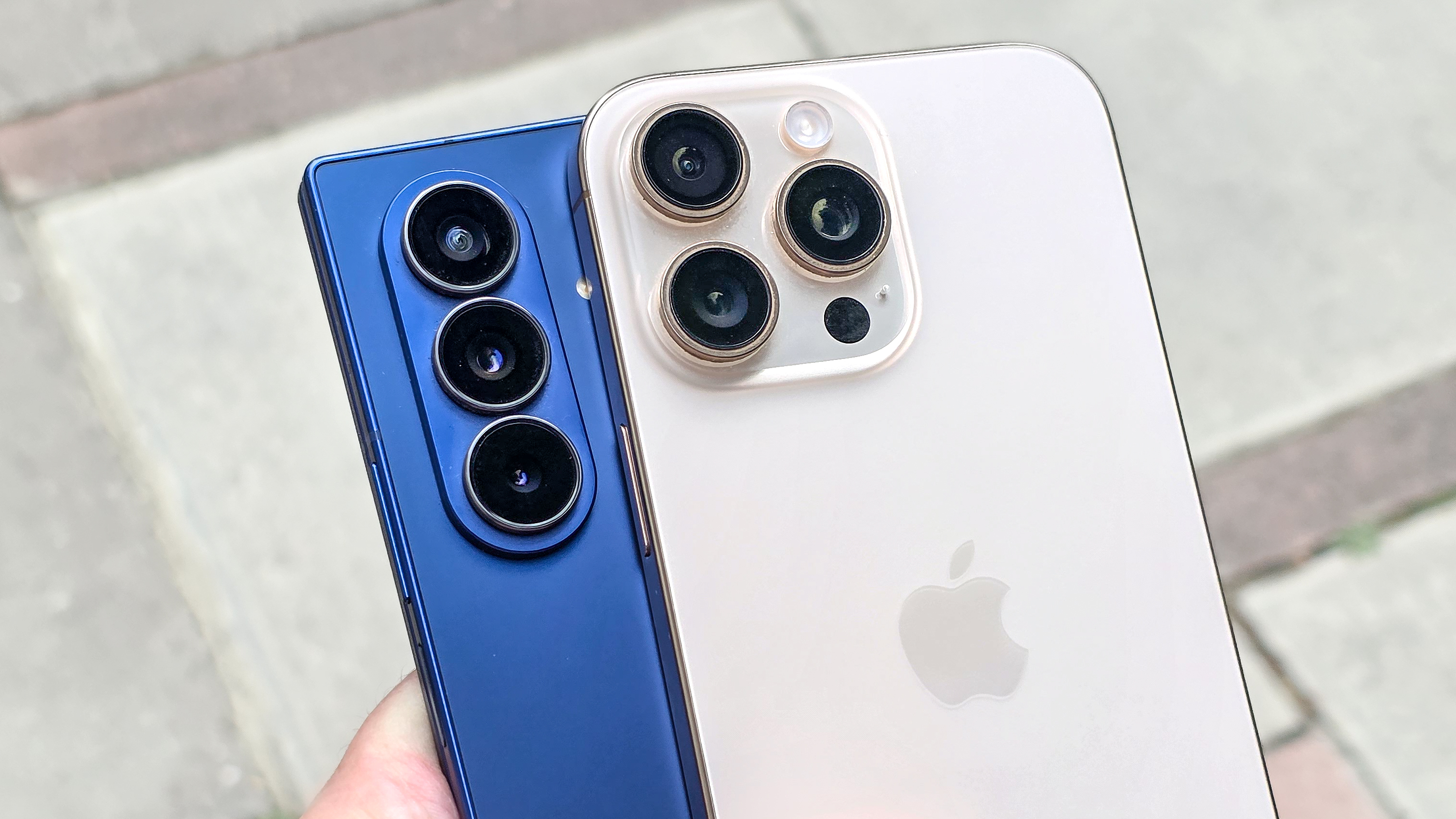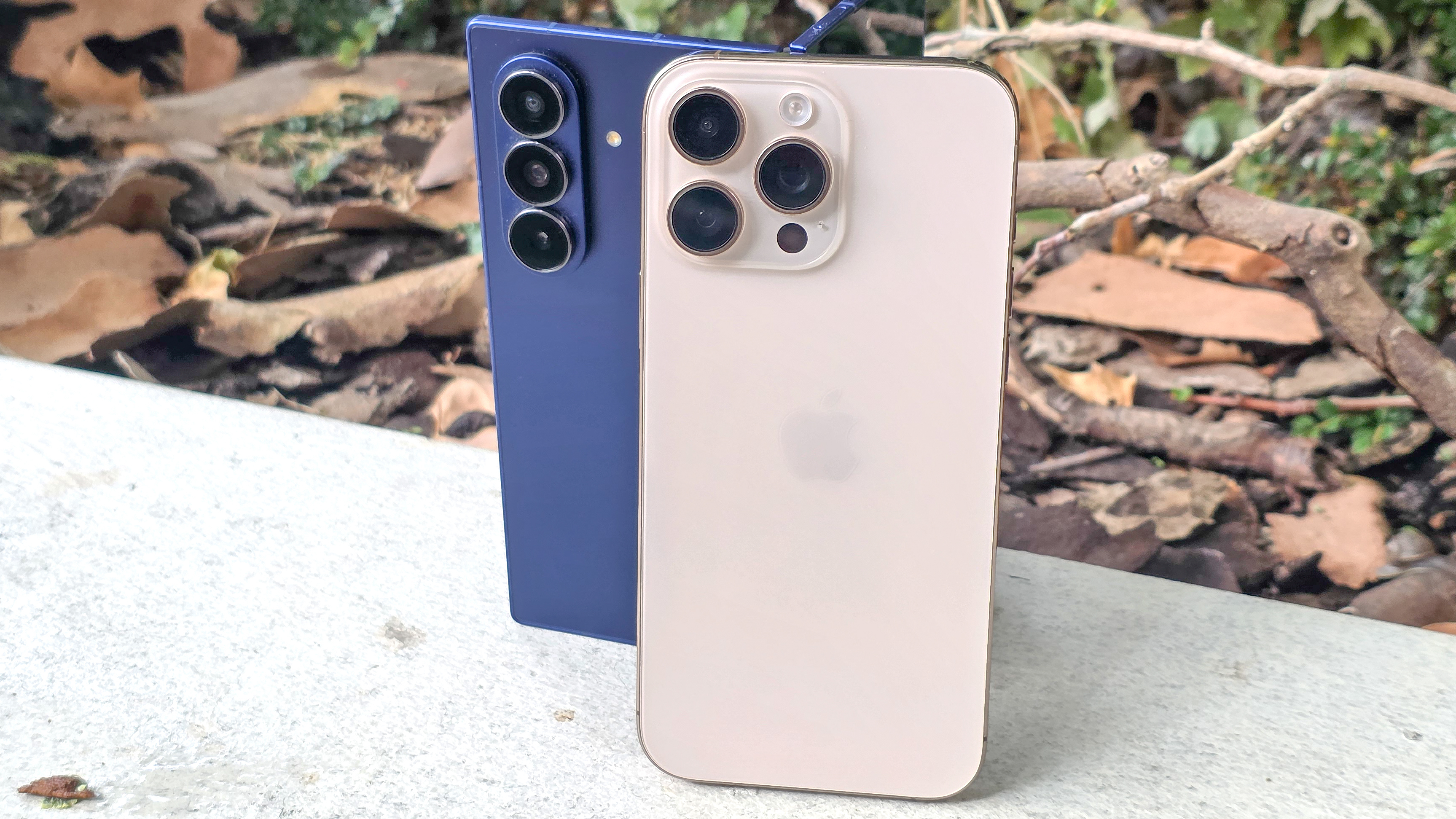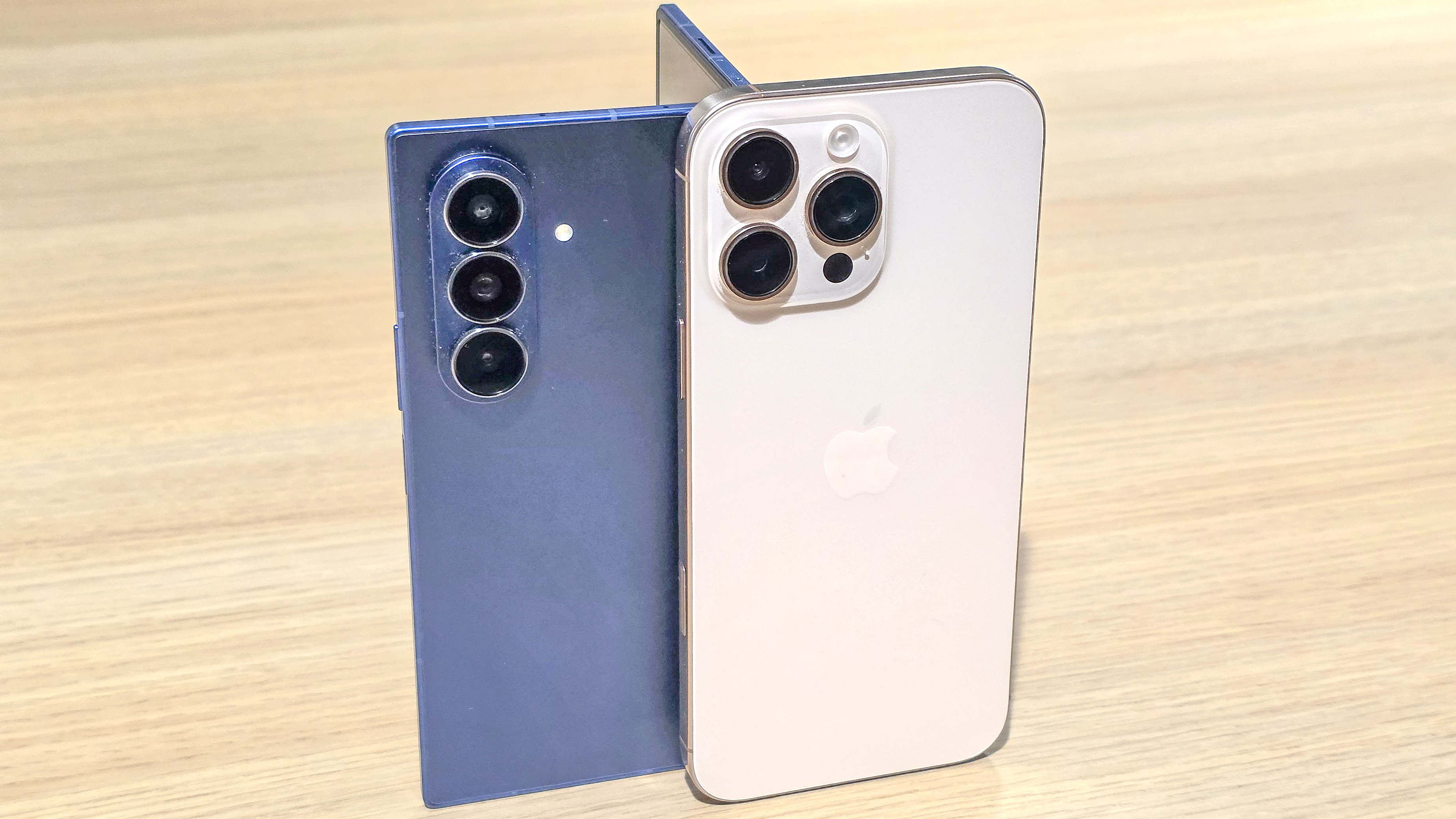I tested Samsung Galaxy Z Fold 7 vs. iPhone 16 Pro Max in a 200-photo shootout — which camera phone wins?
Ten rounds, two phones, one winner

Comparing the Samsung Galaxy Z Fold 7 against the iPhone 16 Pro Max puts Samsung's most expensive phone versus Apple's most expensive iPhone. And there is a huge quantity of differences.
Although the iPhone 16 Pro Max is deservedly thought of as one of the best phones around, the Galaxy Z Fold 7, with its folding design and even higher price tag, is on a different level. But users expect these phones to still cover the essentials, including taking great photos.

To see how these two phones compare, I took them both out for a long snapping session. And below you can see my results, which will demonstrate that the major differences between these phones doesn't stop at just their shape or software.
Main
We begin with this parish boundary marker as the subject for our phones' main cameras. The Galaxy Z Fold 7's take on the scene has more color, while the iPhone's shot has more natural tones, in line with how I saw the scene on the day.
Ultrawide
A short distance away, looking up at a church through the phones' ultrawide cameras, we can see the iPhone's image is way brighter than the Samsung's, aside from the clouds, which are similarly bright and colored. This makes sense considering the size and resolution of the iPhone's 48MP ultrawide camera, while the Galaxy Z Fold 7 uses a smaller 12MP one.
Macro
The Galaxy Z Fold 7's weaker ultrawide camera also impacts its macro photography abilities. Its image of a yellow flower is much darker than the iPhone's, even if it's still detailed. Perhaps the lower light level will be preferable to some users, but it's not to my liking at least.
3x Zoom
Moving now to the telephoto cameras, we begin with the optical zoom level of the Galaxy Z Fold 7's telephoto camera. To hit this zoom, the iPhone 16 Pro Max has to use a cropped main camera image.
Get instant access to breaking news, the hottest reviews, great deals and helpful tips.
You can tell from the softness of the iPhone image that it's not using a proper zoom lens, along with its weirdly dull coloration of this sign. The Samsung shot isn't particularly interesting, but it's definitely the better-looking one of the two with more contrast.
5x zoom
Upping the magnification puts us into the native territory of the iPhone's telephoto camera. And its increased sharpness over the Z Fold's image is plain to see. The Galaxy Z Fold 7's flatter colors make for an interesting visual difference, too.
Selfie
Using the front-facing cameras on these two phones (the outer one in the Z Fold 7's case), we can see how the phones depicts a person and applies a portrait effect.
The iPhone has given me exaggerated highlights in my hair and the brightest parts of my skin, and a warmer overall tone compared to the Z Fold 7, which has gone for a more natural coloration. The portrait effect in both photos is well applied, but interestingly the Samsung's blur is noticeably gentler.
Low light
A Lego minifigure keyring posed on a dark shelf shows us how these phones deal with night mode/low light photography. The iPhone has turned in the brighter image, which isn't surprising given it took a seven-second exposure to the Galaxy's three-second one. But as a result, lighter parts of the shot look over sharpened with exaggerated highlights. As a result, I think I like the Z Fold 7's photo in this particular example.
Colors
Looking across a park, we have a variety of colors for the two phones to depict. The brighter iPhone image brings elements like the purple flowers, the green lawn and the blue shopfronts in the distance to the fore, while the Z Fold 7 is using a flatter color tuning. It's especially noticeable in the sky, which comes across as a plain grey from the Galaxy Z Fold 7 but a more lively blue on the iPhone.
The iPhone's pic is a brighter but a bit overexposed, while the Z Fold 7's shot is darker and a bit more evenly exposed. So it comes down to your preference.
HDR
Putting the color difference aside, this coffee cup gives us a good demo of the two phones' ability to handle extreme light and dark in the same shot.
The Galaxy Z Fold 7 gives us a shot that is not that different from the iPhone in terms of highlights, but there is a little more to see in the darker areas of the iPhone image, like the texture of the ceramics, or the chocolate powder spilling over the edge of the cup.
Max resolution
Lastly, I took a shot with the phones' main cameras again, but set to their maximum resolutions - 48MP in the iPhone's case, and 200MP for the Galaxy.
The iPhone image of this street scene is brighter, which helps make the dark-colored elements like the road, the trees or the buildings pop out more. But the Samsung, thanks to having over four times the pixels, gives you more detail when you zoom in, such as the clock near the center of the image.
It's hard to make out in the small previous window above, but having more pixels to play with can be helpful for editing or reframing a shot after you've taken it.
Verdict

Personally, I think the iPhone 16 Pro Max comes out on top in this comparison. But much of what determines the winner of this comparison for anyone examining these images is going to be personal taste, due to the different ways these phones process images.
Apple's focus on brightness and more intense colors is often a smart route to take, but Samsung's generally less exaggerated take on scenes can be the better one a lot of the time.
There's not a huge amount splitting these phones apart in terms of image quality really. The iPhone is therefore the better value of the two, if you can call a $1,200 phone a "value" device.
The Z Fold 7 still capturees excellent photos a lot of the time though, which some buyers may find tempts them to go for a foldable rather than a regular flagship.
More from Tom's Guide
- I tested this MagSafe wallet for a month and now I can't live without it — especially at 44% off right now
- Google Pixel 10 Pro Fold — what we know so far
- How to speed up your iPhone by clearing its cache

Richard is based in London, covering news, reviews and how-tos for phones, tablets, gaming, and whatever else people need advice on. Following on from his MA in Magazine Journalism at the University of Sheffield, he's also written for WIRED U.K., The Register and Creative Bloq. When not at work, he's likely thinking about how to brew the perfect cup of specialty coffee.
You must confirm your public display name before commenting
Please logout and then login again, you will then be prompted to enter your display name.
